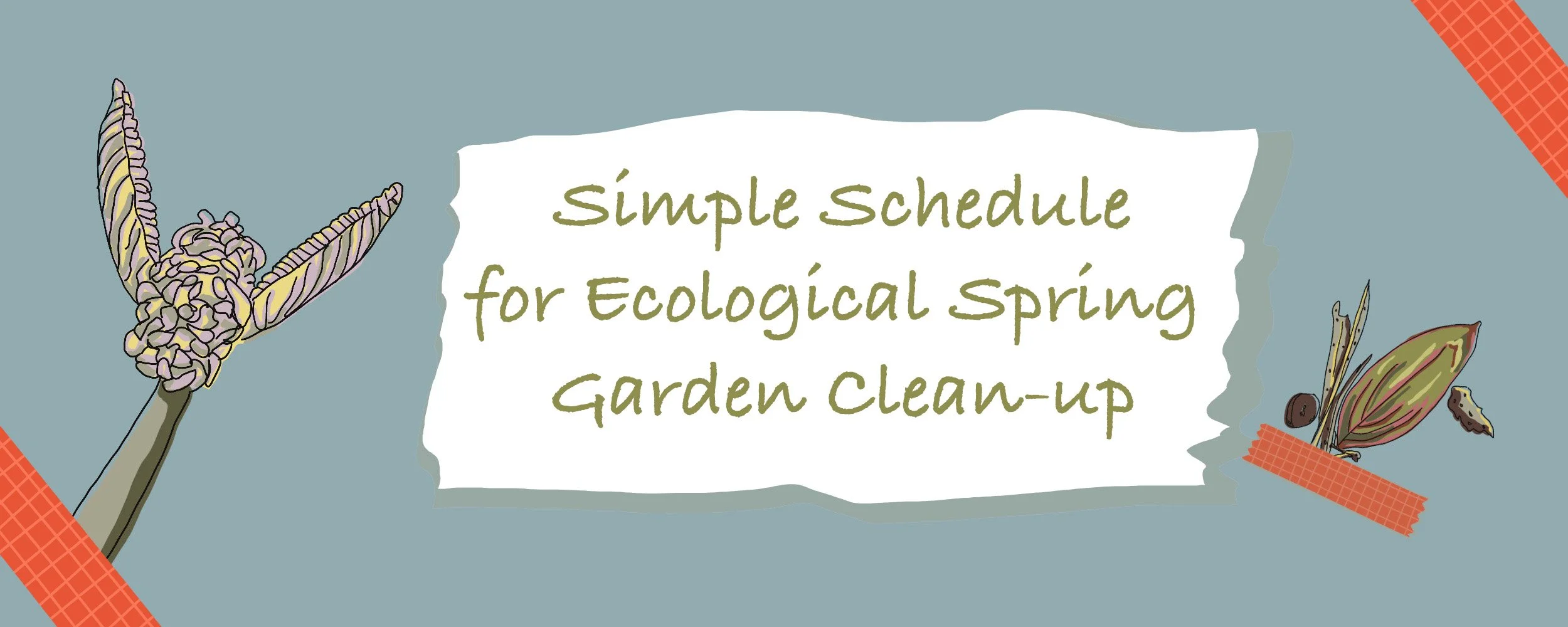An Simple Schedule for Ecological Spring Clean-Up in the Garden
When to Start Spring Clean-up?
Hopefully you’ve read about how easy it is to apply alternative, ecological methods to the standard Spring clean-up we do in the garden. If not here’s a link to Part One of this series.
Waiting for consistent warming weather and a few dry days, is where patience comes into play when it comes to embracing the gentle art of ecological spring clean-up in your garden. Here’s a breakdown of when to start different stages and round up of the tasks:
Early Spring (When Temperatures Are Still Fluctuating)
Key Signs:
Daytime temperatures occasionally reach above 40°F (4°C), but nights are still freezing.
Snow is melting, and soil remains wet and cold.
Some birds are still feeding on seed heads.
No sign of spring ephemerals, bulbs, or perennials yet.
What You Can Do:
Observe your garden and look for signs of life (insects, birds, plant growth).
Avoid walking on wet soil to prevent compaction.
Leave plant material standing—this is still a critical period for overwintering pollinators.
If there is excessive matted leaf litter, gently fluff it up with a rake or your hands to allow air circulation but leave it in place.
Remove invasive plants like Japanese honeysuckle (Lonicera japonica) or garlic mustard (Alliaria petiolata) before they start growing.
Mid-Spring (When Temperatures Stay Above 50°F for Several Days)
Key Signs:
Daytime temperatures consistently above 50°F (10°C).
Early pollinators (bumblebee queens, hoverflies, small carpenter bees) start emerging.
Spring ephemerals begin appearing: Trout Lily, Spring Beauty, Bloodroot.
Bulbs (daffodils, crocuses, snow drops) and some native perennials show new growth.
Birds rely less on seed heads and begin nesting.
What You Can Do:
Begin cutting back dead perennial stems (BUT leave them in the garden in piles or a habitat area).
Cut hollow stems 12-18” high so cavity-nesting bees can still use them.
Start gradually removing leaf litter from areas with emerging bulbs or ephemerals. Leave some around delicate plants as protection.
Prune dormant shrubs (e.g., Elderberry, Dogwood,) before new growth emerges.
Weed out non-native plants before they gain a foothold.
What to Avoid:
Don’t apply mulch yet—let the soil warm up and dry out first.
Don’t till the soil—this disrupts mycorrhizal networks and ground-nesting bees.
Late Spring (After the Last Frost, Mid-to-Late April or Early May)
Key Signs:
Perennials show strong new growth from the base.
Birds are nesting, and insect activity increases.
Soil has dried out and is workable.
Trees and shrubs are budding or leafing out.
What to Do:
Fully remove remaining plant debris and compost it (unless creating a habitat pile).
Apply a light layer of compost and mulch around perennials and shrubs to retain moisture if removing leaves.
Divide and transplant perennials as needed.
If using irrigation, check for leaks and adjust water schedules.
Start planting!
What to Avoid:
Avoid excessive pruning of spring-flowering shrubs (wait until after blooming).
Don’t over-mulch—keep layers thin (1-2”) to avoid smothering soil life.
Still on the fence about why to take your time and do a slower, more thoughtful Spring clean-up? In Part 3 of this series I’ll go into detail about why an ecological approach is beneficial for pollinators and the soil. If you’d like to be notified as soon as it goes live, make sure you’re signed up below.

